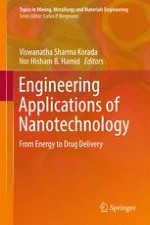This book focuses on the use of nanotechnology in several fields of engineering. Among others, the reader will find valuable information as to how nanotechnology can aid in extending the life of component materials exposed to corrosive atmospheres, in thermal fluid energy conversion processes, anti-reflection coatings on photovoltaic cells to yield enhanced output from solar cells, in connection with friction and wear reduction in automobiles, and buoyancy suppression in free convective heat transfer. Moreover, this unique resource presents the latest research on nanoscale transport phenomena and concludes with a look at likely future trends.
